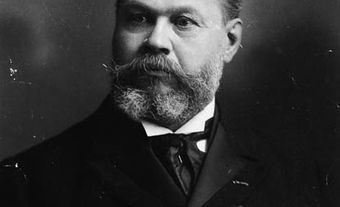Until the end of the 19th century, the Acadians lived in isolated groups and had little contact with the outside world. This isolation helped to preserve the traditions of their ancestors: their way of speaking (which is a variant from the Poitou region in France), their cuisine, their celebrations and their oral traditions. Since the Acadians’ arrival on the North American continent in the 17th century, they have passed down songs, stories and legends from generation to generation.
Before 1940, there were very few documents that illustrated Acadian folklore, and no real ethnographic research had been carried out. It wasn’t the 1950s that substantial collections of material were organized. Around 1970, with the establishment of the Centre d’études acadiennes (Centre for Acadian Studies) at the Université de Moncton, research into Acadian folklore began to flourish. Today, the “Acadian corpus” figures prominently in the intangible cultural heritage of North American francophones.
“Prehistory”
In 1685, Jean Campagna, a colonist who settled at Beaubassin, was formally accused of witchcraft. Documents related to the case constitute the first evidence of the popular beliefs in Acadia. In the second half of the 19th century, the newspaper Le Moniteur acadien published literary versions of tales and legends, but nothing touching on authentic oral tradition.
In 1877, the French historian François-Edme Rameau de Saint-Père published Une colonie féodale en Amérique (L’Acadie, 1604–1710) (A North American Feudal Colony: Acadia, 1604–1710). This work contained some information on the traditional life of the Acadians. A few years later, Philias-Frédéric Bourgeois conducted a survey of students at a school in Scoudouc, a village located about 15 kilometres northwest of Moncton, where the Virgin Mary had reportedly appeared. Much like present-day ethnographers, Bourgeois went to the village and interviewed witnesses. In 1896, Bourgeois published L’École aux apparitions mystérieuses (The School of Mysterious Apparitions), which recounted the experience. In 1911, André-Thaddée Bourque published Chez les anciens Acadiens (At Home with Ancestral Acadians), a work containing various details about the Acadians’ customs and popular beliefs.
Despite the efforts of a small number of authors and intellectuals, by the first quarter of the 20th century, no serious study of Acadian folklore had been conducted.
The Pioneers of the 1940s
Researchers began to approach the study of folklore with greater scientific rigour at the end of the 1930s and the beginning of the 1940s. At that time, the Notre-Dame de l’Assomption cathedral, the official monument of the “Acadian renaissance,” was built in Moncton. Between 1938 and 1941, there were 87 articles on Acadian popular songs published in the newspaper La Voix d’Évangéline. Writing in a periodical of which he was the assistant editor, Joseph-Thomas LeBlanc invited readers to send him versions of songs from the Acadian oral tradition and, thanks to this technique, he was able to collect more than 1,300 items. LeBlanc’s columns inspired the critical work undertaken by Marius Barbeau, including his Romancero du Canada (Ballads of Canada), published in 1937. By the time of his premature death in 1943, LeBlanc had become a recognized expert on Acadian folklore and had carried on lengthy correspondences with a large number of influential researchers.
Around the same time, in 1942, Father Anselme Chiasson and Father Daniel Boudreau produced the first volume of their Chansons d’Acadie (Songs of Acadia). This songbook quickly became popular. Many choirs and artists, in Acadia and Québec, drew on it for their repertoires. Eleven volumes of Chansons d’Acadie were published between 1942 and 1993.
In 1946, the French linguist Geneviève Massignon explored all parts of Acadia. As part of her doctoral studies, she researched regional speech and songs of the oral tradition.
The Golden Age
During the 1950s, Luc Lacourcière and Félix-Antoine Savard of Université Laval’s Archives de folklore carried out research into Acadia’s intangible heritage. Enthused by the richness of the Acadian oral tradition, they were able to generate significant collections of tales, legends and songs. Released in 1958, the album Acadie-Québec is one example from this extremely fertile period of collecting. Le Barachois, a collection of poems and reminiscences written by Savard, bears witness, from a literary perspective, to special moments spent among the Acadians.
Since 1966, the Université de Moncton has offered courses in folklore and, in 1970, the Centre d’études acadiennes was founded. Acadians themselves, with Father Anselme Chiasson at their head, quickly gathered folkloric material and created significant collections. Some of them, notably famous Acadians Édith Butler, Angèle Arsenault and Antonine Maillet, went to Québec with Lacourcière to pursue their studies.

During the 1970s and 80s, a considerable number of ethnologists crisscrossed Acadia enriching archival collections while writing scholarly articles, monographs and works on the subject of Acadian folklore. Among them were Catherine Jolicoeur, Robert Bouthillier, Vivian Labrie, Georges Arsenault, Lauraine Léger, Jean-Claude Dupont, Charlotte Cormier and Ronald Labelle. In the 1990s, Robert Richard followed in their footsteps.
The Acadians did not leave a large-scale built heritage. They are recognized, however, for certain artisanal practices and ancestral customs. In 1980, the Musée acadien (Acadian Museum) in Memramcook, founded in 1886 by Father Clément Cormier, moved into a new building on the Université de Moncton campus. The museum collection, consisting of more than 35,000 objects and photographs, is the richest assemblage of artifacts representing the tangible culture of Acadia.
The link between Acadia and its folklore has yielded a significant literary heritage: history books, legends, songs, recipes and novels. Research and field studies begun more than 50 years ago still provide material for artists and for performers with an interest in the oral tradition.
Tintamarre - On the Trail of Acadians in North America by André Gladu, National Film Board of Canada

 Share on Facebook
Share on Facebook Share on X
Share on X Share by Email
Share by Email Share on Google Classroom
Share on Google Classroom






